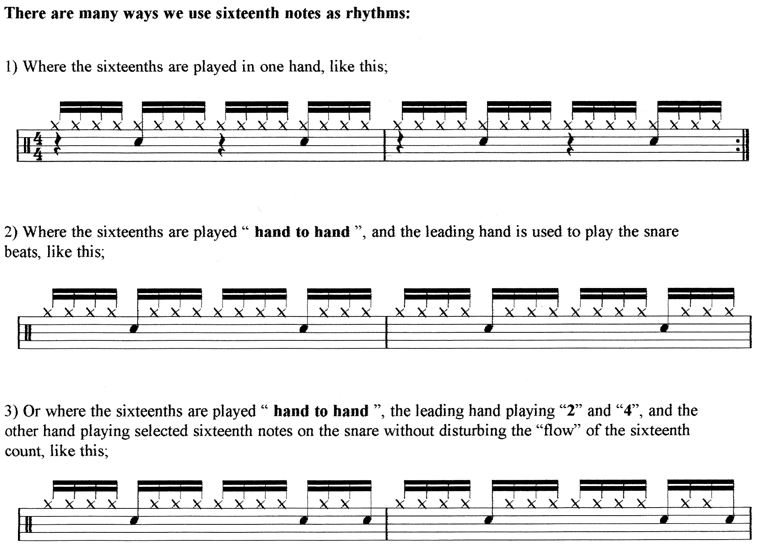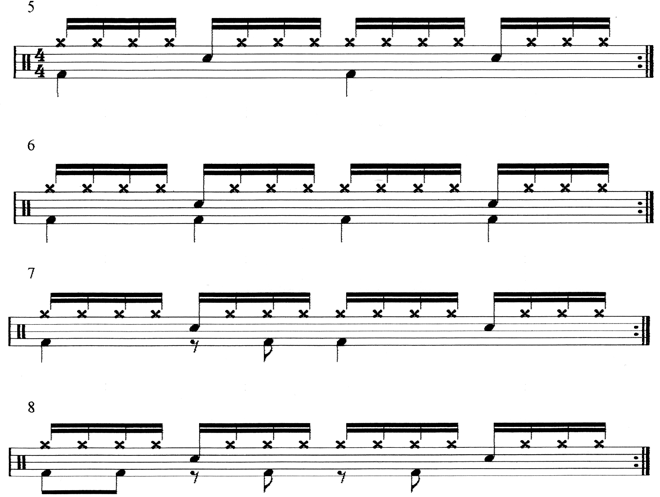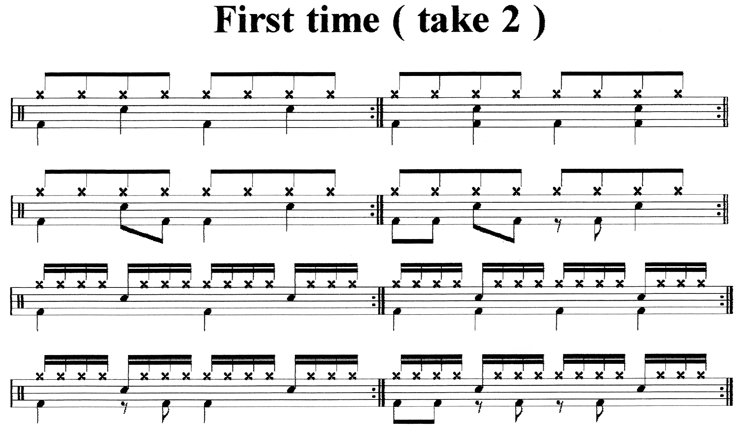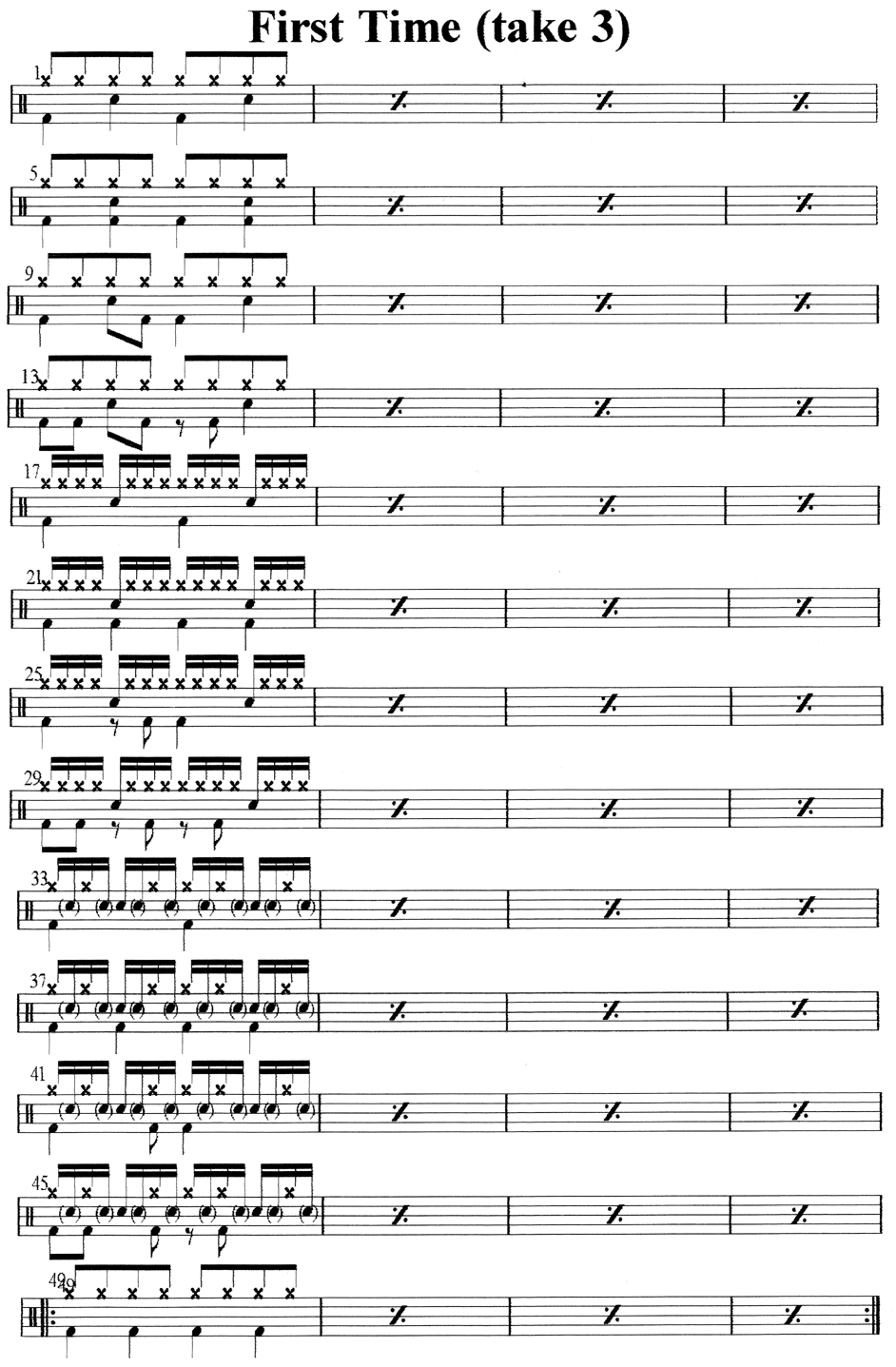Navigate to:

Navigate to: |
HOME | 
| BACK TO TUITION PAGE |
|---|
Sixteenth notes are SO important to the modern drummer. They allow us break up every "pulse" into four smaller and therefore more manageable subdivisions. The "sixteenth" count has even become a drummers language as so many drummers from around the world use it.
Getting the count to feel natural and to flow is the key to "sixteenths" (even though a gremlin in the back of your mind will tell you its not needed and makes the job more difficult - DON'T LISTEN TO HIM!). Notice that to save time and "page-clutter" we use "+" to represent "and". Also we want to keep our count percussive, so instead of saying "a" its usual flowing way we'll shorten the sound of it to "uh".

As there are four subdivisions to each "pulse", it means that there are four positions that the rest can fall on:
The "Pulse; the "e"; the "and"; or the "a".


When "resting" these four positions has become easy try these:


Another method of playing sixteenth notes is Ghost Strokes. Ghost strokes are tiny taps on the snare drum that can transform any rhythm in which they are used. The sixteenth notes are played hand to hand as before, with the leading hand taking the snare drum at "2" and "4", but now we use the other hand to play all of the "e" and "a" beats softly on the snare as well. Notes that are to be played as "ghosts" are enclosd in brackets.


Now we are ready to add some bass drum to our "hand to hand" sixteenth notes. Try the next four examples. You will notice that the bass drum notes that we have used are in the same places as we used for "First Time", so we shall call these rhytms 5-8.

As with our first four rhythms practice playing each of these as smoothly as you can, until you can play each one four times and move easily to the next one. When you are comfortable with this try this essential counting exercise. It is best to tackle it in the three steps shown below. In "step 1" play the first bar with your "riding" hand (the hand you normally use to play the hihat) only, and bar 2 add your other hand on the "e" and "a" positions to make it hand to hand leading with your riding hand. Notice that the exercise asks you to count in sixteenths all the time, which means counting all the sixteenth positions even if they are not being played. Play the exercise round and round making sure you maintain an even count all the time.

Now that you can play "step 3" you have leapt forward, because now you can integrate eighths and sixteenths in a meaningful way.
It also means that you are now ready to put all eight of the rhythms together, including the change from "4" to "5". If you play each rhythm four times and then move on to the next one as before, you will be able to play along with "First time (take 2)". Here are all eight rhythms, so remember to play four times round each one. Lets do it!

Remembering how many bars of each you have played can be awkward, so we have a visual shape to help us follow our place in the tune. It is a backslash with a dot either side of it which we call a "repeat bar". It tells us to play all of the information from the previous bar into the one that the repeat bar occupies. Using repeat bars the four times round the first rhythm would look like this:

Before we are ready to play the complete version of "First time" it is worth working through the following exercise which helps the change from regular hand to hand sixteenths into ghost strokes. Make sure you play all of the sixteenths in bar 1 (even the last one!) before changing to ghosts.


Now you should be fully prepared to play the whole tune; First time (take 3). Notice that bars 49-52 are slightly different for the fade out.
